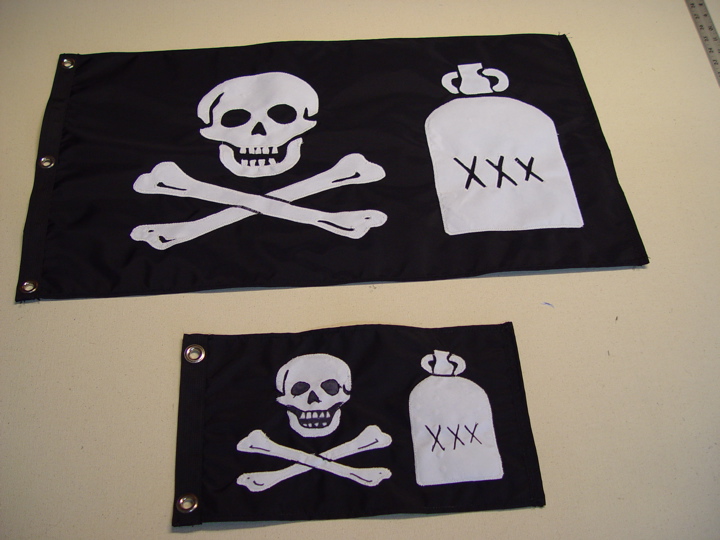Field Trip to Luton, England – Hattin’ Around #2
It was autumn 2013 and I was surprised with an invite to join Edwina Ibbotson and another apprentice, Mee on a field trip up to Luton to visit three millinery suppliers. Boon & Lane the block makers, Baxter, Hart & Abraham suppliers of felt, straw, and petersham, and Randall Ribbons suppliers of feathers, flowers, an endless array of sinamay colors and much more.
We drove to Luton in Edwina’s light blue vintage Mercedes. That is an experience unto itself. It takes me about 10 minutes to figure out how to do the old seat belts. It is an odd hook and magnet device. The journey to Luton is about 40 miles through London and takes over an hour and 45 minutes, but we arrive mid morning at our first destination, Boon & Lane.
Boon and Lane  are the block makers. This was an experience to remember. There were two men working in the block factory that was filled  with wood and sawdust on one half and different types of sand on the other. They make both wood and aluminium (also spelled aluminum in the USA, so the reason we pronounce this word differently is that it actually spelled differently in the UK vs US) blocks. The aluminium blocks are used for more industrial use, where they are attached to a heating device and there is a top and bottom piece that clamps together to form the hat shape all at once.
Alan Davies and Steve Lane make everything. When I was there, Alan was working on wood blocks while Steve handled the sand packing in preparation for the molten aluminium. They were welcoming and generous with their time. Explaining what they were doing, the stages of making a hat block and showing us the various pieces of equipment.
Thus far in my hat career, I’d done very little blocking, but I was completely seduced by being there. As you are sure to have guessed, today would be my first custom made block purchase. I choose a large downward flat 45 degree brim block and an oval head shaped flat topped crown block with slightly rounded edges, to contrast the domed oval crown block I had in my very limited collection. It took a couple of months for the blocks to be made. Shortly before Christmas, Edwina came back one day with her new blocks along with my freshly varnished crown and brim blocks. They were beautiful shiny golden yellow with my name and the year stamped into them. The excitement was only dimmed a bit as I tried to figure out how I was going to get this massive brim block home on my bike. Alas, I could only manage the crown block that day on the bike, I’d have to wait and bring it home on the bus a couple days later. The journey was made easier by using my very large linen furoshiki
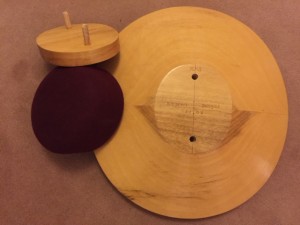
My blocks from Boon and Lane, can you see my name. I’ve been using the crown and it has a felt on it to make it a little bigger for my head size.
Next stop –Baxter, Hart & Abraham, suppliers to the millinery trade. This place of tidy and well organized. The textile junkie in me thrilled to touch the various different felts. Wool felt, fur felt, and the really furry felts called Melusine. Then there was the colors. My shopping strategy goes, walking around and gather everything I want. Then doing a mental subtotal of how much it will cost. Then feeling anxious about how much I have, then putting back some of my treasures, until I don’t feel the sense of financial panic. I bought several wool felts to practice on without too much financial impact, but my prize purchases were a yummy small (cone) cognac (gold) and a beautiful large (capeline) grey fur felt. It was glorious and I was so nervous at messing up the fur felts. I envisioned a gray (grey) large brimmed hat with a fairly simple crown that I could wear all winter. However, it wasn’t going to be that winter that I’d get to wear it.
Last stop- Randall Ribbons, the makers of all things feathers and flowers. They had a minimum order. Their website says a minimum order of £30. I did not spend anything at Randall Ribbons. I think I was a bit overwhelmed by this point. I had placed a rather sizable order at the block makers, and purchased enough felt at the millinery suppliers to keep me busy for a while. And honestly I just could not envision how I would trim these new hats of mine. I would have bought a simple hat pin or something, but with a minimum order, I left with nothing. I cannot say the same for Edwina or Mee.
We only went to three places, but it was such a full day. Many thanks to Edwina for the tour of Luton and Mee for being a newbie like me. It was nice to be able to listen to someone else’s questions.
Since the field trip to Luton, I’ve heard the name mentioned several time in relation to the hat making and millinery industry. In this country they have been making things for a very long time. Thankfully there are others who love doing to research and writing of the history and I get to read the fruits of their labour. It was oddly relevant as I have just begun taking a strip straw class at Morley College with Jane Smith.
Stay tuned for future episodes about Luton History and my Strip Straw Saga.
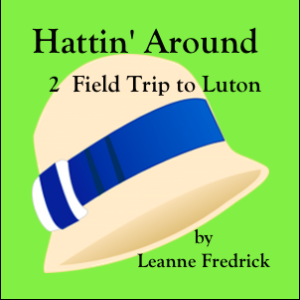
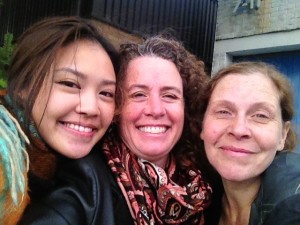
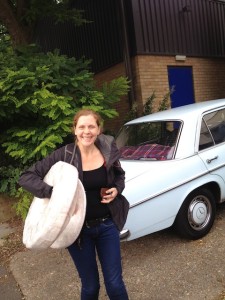
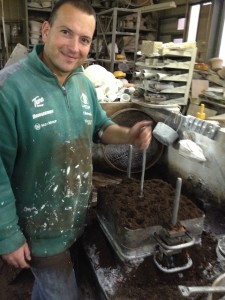
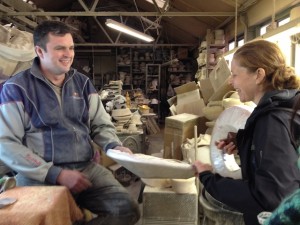
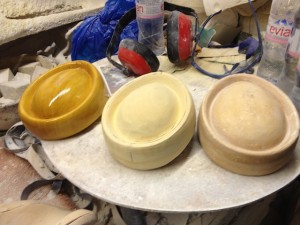
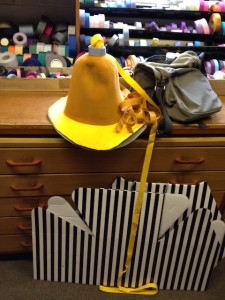
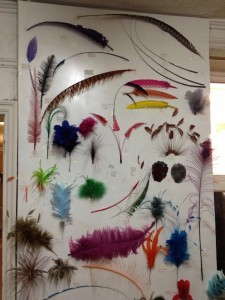
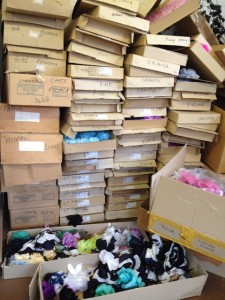
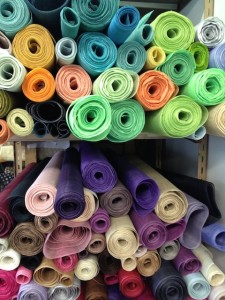
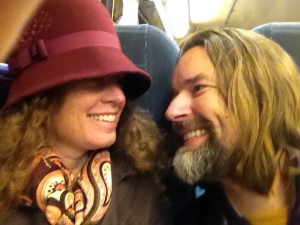
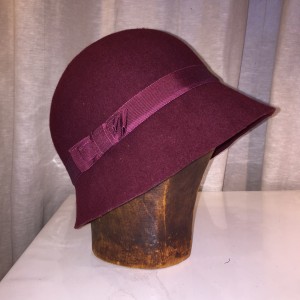
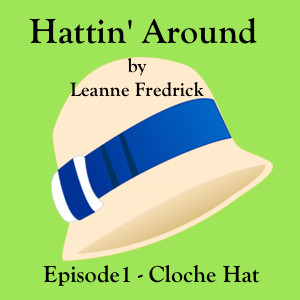
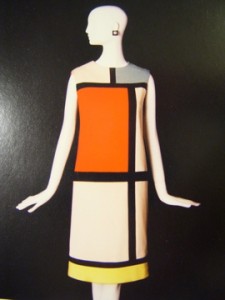 I am not a clothes hound, but I lust for beautiful textiles, proportions and craftsmanship. Thus going to the Yves Saint Laurent show appealed to me on a different level than it would for many other people. I was looking for fun, inspiring ideas to share with my clients and construction techniques for home decor and soft goods, rather than clothing.
I am not a clothes hound, but I lust for beautiful textiles, proportions and craftsmanship. Thus going to the Yves Saint Laurent show appealed to me on a different level than it would for many other people. I was looking for fun, inspiring ideas to share with my clients and construction techniques for home decor and soft goods, rather than clothing.
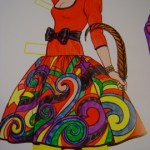 Fine Artists such as Picasso, Matisse, Vincent Van Gogh, Georges Braque, Tom Wesselman, Piet Mondrian were represented. (image – Picasso Evening Dress, 1979)
Fine Artists such as Picasso, Matisse, Vincent Van Gogh, Georges Braque, Tom Wesselman, Piet Mondrian were represented. (image – Picasso Evening Dress, 1979)
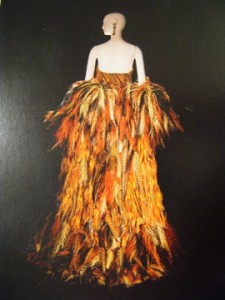
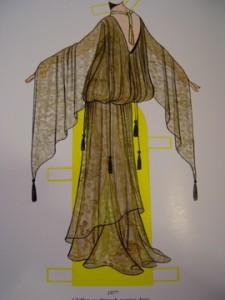
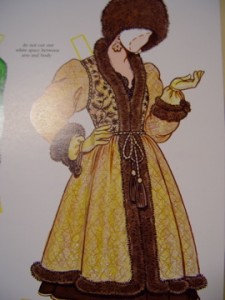
 Leading edge loops and buttons would make for an eye catching detail on a window treatment. A Chinese jacket inspiration.
Leading edge loops and buttons would make for an eye catching detail on a window treatment. A Chinese jacket inspiration.